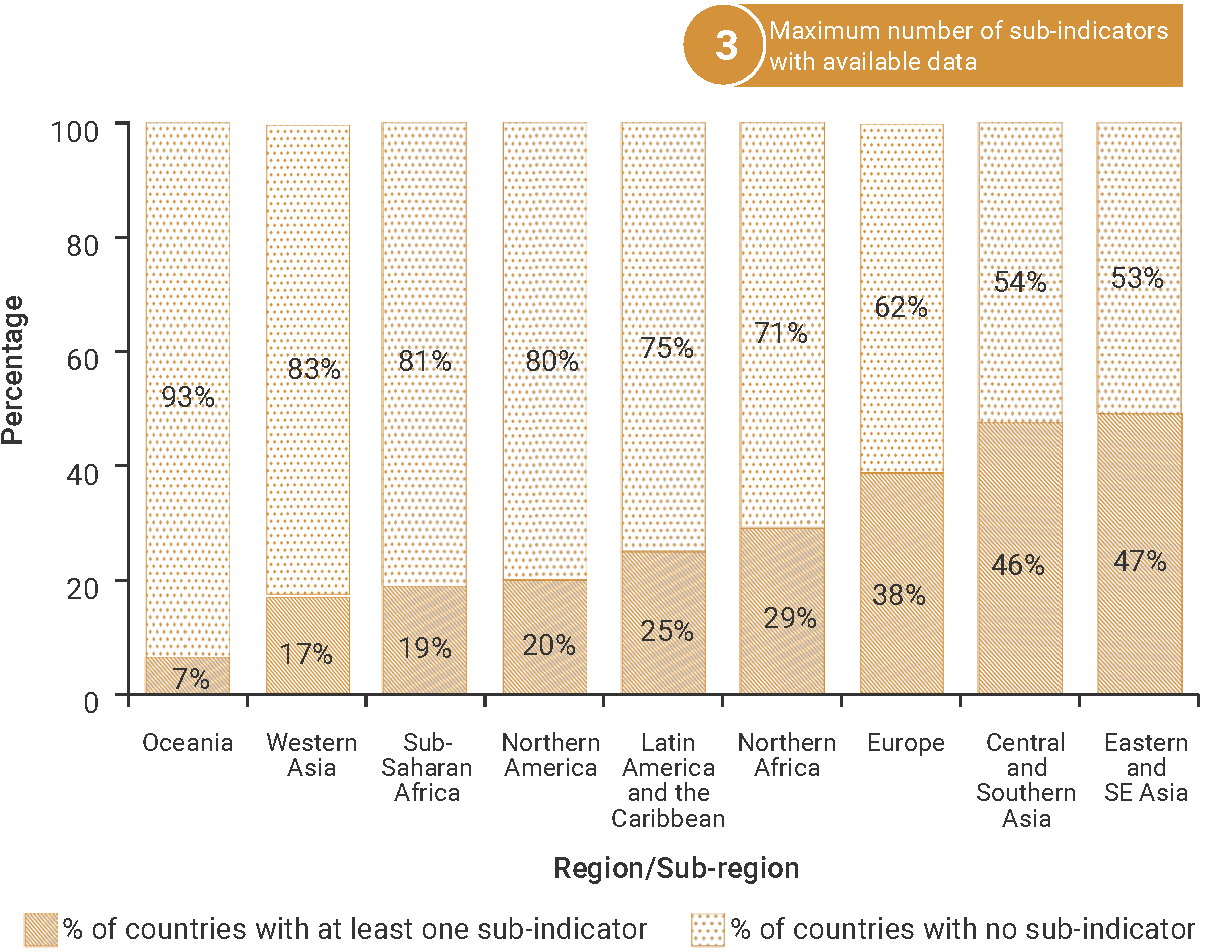SDG Indicator 12.1.1: Number of countries developing, adopting or implementing policy instruments aimed at supporting the shift to sustainable consumption and production
1. Key features and metadata
Definition: This indicator allows for the quantification and monitoring of countries making progress along the policy cycle aimed at supporting Sustainable Consumption and Production (SCP).
| Sub-indicator | Disaggregated by |
|---|---|
|
SG_SCP_POLINS Countries with policy instrument for SCP (1 = YES; 0 = NO) |
Policy instrument (economic and fiscal instruments, macro policies, regulatory and legal instruments, or voluntary and self-regulation schemes) |
|
SG_SCP_CNTRY Countries with SCP national action plans or SCP mainstreamed as a priority or target into national policies (1 = YES; 0 = NO) |
No current data disaggregation available.
|
|
SG_SCP_TOTLN Number of policies, instruments and mechanism in place for SCP (Number) |
Sources of information: Data is provided by the 10-Year Framework of Programmes on Sustainable Consumption and Production Patterns (10YFP) National Focal Points through an online survey.
Related SDG Indicator: 12.7.1 (Number of countries implementing sustainable public procurement policies and action plans).
2. Data availability by region, SDG Global Database, as of 02 July 2025

3. Proposed disaggregation, links to policymaking and its impact
| Proposed disaggregation | Link to policymaking | Impact |
|---|---|---|
|
Countries with policy instrument for SCP, by legal status(1=YES; 0=NO):
Applies to:
|
The aim of this disaggregation is to emphasize the legal status of the SCP policy instruments put in place by countries and to monitor progress made over time to strengthen the national policy framework. In particular, with respect to binding instruments that offer a stronger guarantee of a long-term engagement towards SCP(UNEP 2020a). This disaggregation is consistent with the 10YFP(UN 2012). |
The assessment of binding policy instruments alongside the allocation of adequate means to enforce and implement them helps in determining the degree of political commitment by national authorities for making SCP policy a priority. Non-binding instruments (e.g. recommendations, informal agreements, guidelines, communication, ‘papers’, and ‘road maps’) are also crucial for ensuring institutional and stakeholder engagement, arrangements and partnerships toward circularity and decoupling economic growth from resource use(UNEP 2020a). |
|
Countries with policy instrument for SCP, by targeted sector(1=YES; 0=NO):
Applies to:
|
The purpose of this disaggregation is to show the differentiated efforts made in developing SCP policies by economic sectors and/or categories of stakeholders. This is with a view to highlighting their priority areas and where additional efforts are needed to close the missing actions gap towards having a complete national SCP strategy(OPN n.d.). This disaggregation is consistent with the 10YFP(UN 2012). |
This offers a diversity of opportunities for enabling changes and advancing sustainability. Including across other sectors, through the promotion of the circular economy and enhanced multi-stakeholder and public-private partnerships (UN 2022g). |
|
Countries with policy instrument for SCP, by level of policy development(1=YES; 0=NO):
Applies to:
|
This disaggregation monitors the level of implementation of SCP policy from the design stage to full completion. It produces useful information on the work in progress and maturity of these policies. It can be used by policymakers to identify where barriers to the smooth implementation of SCP policy remain; the causes of those barriers; whether they are institutional, economic,social, or environmental; and the corrective measures required to put them on track. This disaggregation is consistent with the 10YFP(UN 2012). |
Depending on the level of policy implementation, different levers or means of intervention can be put in place to facilitate the smooth running of operations. This may involve the development of appropriate strategic and legal frameworks, the provision of financial and human resources or the strengthening of institutional and individual capacity building. At every stage of policy implementation, it is critical to ensure the widest possible participation of the population and concerned stakeholders (i.e. local authorities, CSOs, businesses, and academia). This helps facilitate the expression of needs and expectations of those who will be affected by or are actors in the SCP policy. It also allows for the involvement of as many sectors as possible (e.g. industry, agriculture, energy, and trade). The end of each implementation stage must also be marked by an assessment of the results achieved so that corrective measures can be taken, if necessary, and priorities and implementation tools can be adjusted(UNEP 2020a; UN 2022g). |

